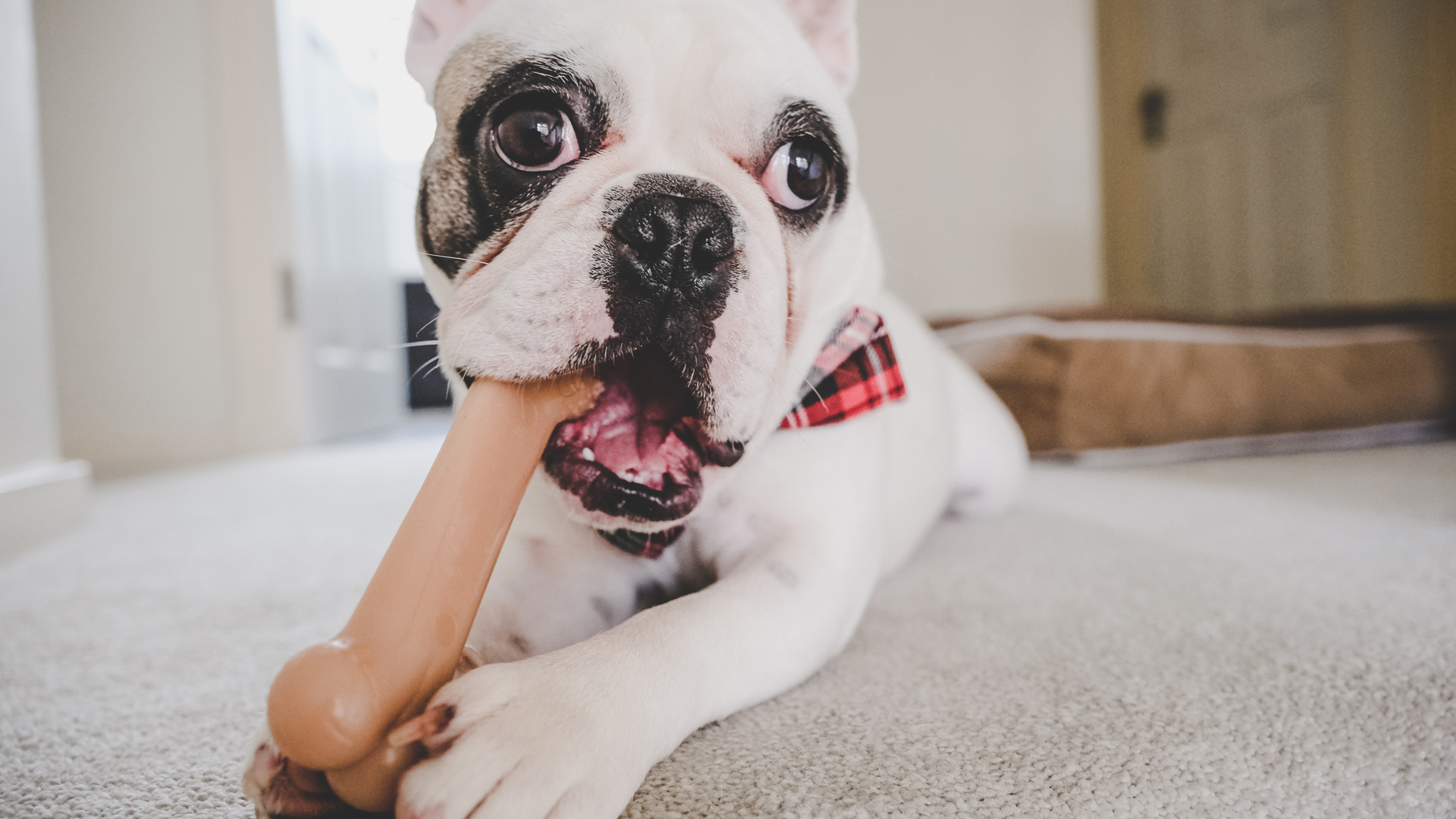Does your dog love chews? Here’s why it can help improve training and behavior
Keep your pup calm and content with a chew!

It’s no great secret that many dogs love chews – there’s a reason so many dog parents want to know more about choosing safe chews for dogs, after all. Chewing is a natural instinct for dogs, whether you have a puppy who’s teething, or a senior dog who wants to keep their teeth healthy. Dogs explore the world through their mouths, and chewing is just one part of that.
But something not everybody knows is that using chews during training can help a dog’s behavior. So, grab some of the best, longest lasting dog chews, and let Amelia Steele, a certified dog trainer and behaviorist who goes by the name Amelia the Dog Trainer, explain how.
A post shared by Amelia Steele (@ameliathedogtrainer)
A photo posted by on
Steele explains that chewing has three key uses in training, and that we often over-complicate training – ”Sometimes the easiest thing to do, is the easiest thing,” she says.
The first is that giving your dog a chew reinforces their place so they aren’t begging at the table. If you’re enjoying a meal, giving your dog a chew in their bed (hopefully one of the best dog beds for chewers) or on their mat will encourage them to stay there and enjoy the chew rather than beg for food or scraps while you’re trying to eat.
The second use is to encourage rest and calm behavior. If your dog is calmly chewing and keeping themselves busy, perhaps after a walk or at a time when you can’t give them constant attention – perhaps if you’re in a work meeting from home – they’re displaying good behavior and letting you get on with what you need to do.
The third and final use is to “reinforce calmness around guests”, explains Steele. Even if your visitors love dogs, and you’re all happy to be joined by your dog, you might worry about your dog accidentally hurting a younger or older guest or knocking over a hot drink in their excitement. Giving them a chew when you have visitors can reinforce calm and relaxed behavior.
Likewise, if you have a visitor who isn’t a dog person, or you’re having an important conversation and you’d rather things be more calm and quiet, your dog may well be perfectly happy in another room with a chew for the duration.
Get the best advice, tips and top tech for your beloved Pets
If your dog’s an aggressive chewer, however, you might be worried about whether they’ll be safe when chewing. Take a look at a vet's guide to safe dog chews for aggressive chewers for information on the best choices out there.
Meanwhile, there’s another potential alternative to chews out there that you may have considered: calming treats. But do calming treats for dogs work? For dogs with mild anxiety, they could be a suitable alternative.
Once you've found a suitable chew for your pooch, why not give Steele's advice a go and let us know if it helped with training.

Adam is a freelance journalist specialising in pets, music and culture, and mental health and wellbeing. He investigates and writes the large majority of news on PetsRadar, and collaborates with veterinary experts to produce informative pet care content.
Adam has a journalism degree from Southampton Solent University and a masters degree in Magazine Journalism from Cardiff University. He was previously senior editor at dog advice website DogTime.com, and has also written for The Independent, GoodToKnow and Healthline.
He owns two rescue cats, Bunny and Dougie, and has also previously had a rabbit, fish and Roborovski dwarf hamsters.
